DLR hypoxia study: All symptoms disappeared after 30 hours
“We were the mice for five weeks,” says Nancy Hansen describing the time she and Ralf Dujmovits – as reported – spent in a hypoxia chamber at the German Aerospace Center (DLR) in Cologne half a year ago. The goal of the study was to find out whether, under certain circumstances, extreme hypoxia can lead to a strengthening of the heart in humans – as previously found out in two experiments with mice in the USA. After an acclimatization phase of around two weeks, the climbers had spent 16 days at a simulated altitude of 6,700 meters or higher, including four days at an oxygen content of only eight percent, which corresponds to 7,112 meters. “I suffered quite a lot,” admits Nancy. “But it was a big privilege to be part of the study.” Ralf is also still impressed by the experience: “I was hard on the edge. To be honest, I wouldn’t do it again. I underestimated the whole thing.” Last week the couple was in Cologne again – for one of several follow-up examinations. The first preliminary results of the study are now available.
![]() read more
read more
“Warm” ice in Everest glacier
The Khumbu Glacier at the foot of Mount Everest is apparently even more endangered by climate change than previously assumed. British glaciologists, who measured the ice temperature of the glacier in 2017 and 2018, point to this. At three drill sites up to an altitude of about 5,200 meters near Everest base camp, they used a specified adapted car wash unit to conduct hot water under high pressure into the ice. The scientists hung strings with temperature sensors in the resulting holes, the deepest of which reached about 130 meters deep into the ice. “The temperature range we measured was warmer than we expected – and hoped – to find,” says Duncan Quincey of Leeds University, leader of the “EverDrill” project.
![]() read more
read more
“Hypoxia expedition” successfully completed
And suddenly the call came from space: “Here is Alex”. At first Ralf Dujmovits did not know who was talking at the other end of the telephone line: “Alex? Then I suddenly recognized the voice I had heard two days earlier during the broadcast of the rocket launch.” Alexander Gerst inquired from the International Space Station (ISS) about the condition of the German climber and his Canadian partner Nancy Hansen in the hypoxia chamber of the German Aerospace Center (DLR) in Cologne. “It sounded like he was sitting next door.” For a quarter of an hour, Ralf, the first and so far only German climber to have scaled all 14 eight-thousanders, spoke to “Astro Alex”, the first German astronaut to take command of the ISS. “He was very interested in our experience in the lab. That was great.” Of course, Nancy talked to Gerst too. For both climbers it was a “real highlight”, says the 49-year-old Canadian.
![]() read more
read more
Prince and princess in the hypoxia chamber
Bottled oxygen on a mountain has always been out of the question for me. On principle. Today I made an exception – for a “virtual mountain”. To be able to visit Ralf Dujmovits, the only German mountaineer who has scaled all 14 eight-thousanders, and his partner, the Canadian climber Nancy Hansen, it is mandatory to use a breathing mask. After two weeks in the hypoxia chamber of the German Aerospace Center (DLR) in Cologne, the two test persons have reached the simulated target altitude of 7,112 meters. The percentage of oxygen in the air, normally 21 percent, was gradually reduced to eight percent by adding nitrogen. “It’s like climbing a mountain. The acclimatization is almost done, now we’re heading for the summit,” says Ralf. “The time on the summit will be of course much longer.”
![]() read more
read more
Dujmovits: “We are in good hands here”
The doors have closed behind Ralf Dujmovits and Nancy Hansen. The so far only German climber who has scaled all 14 eight-thousanders and his Canadian partner moved in a 110-square-meter hypoxia chamber of the German Aerospace Center (DLR) in Cologne on Tuesday. As reported, the two mountaineers are participating in a study conducted by DLR in cooperation with the University of Texas to investigate whether extreme hypoxia can also have a positive side effect for human beings. US researchers from Texas found in two experiments with mice that heart muscle cells devided when the animals were exposed for two weeks to oxygen deficiency corresponding to conditions at 7,000 m. In mice which had previously been triggered myocardial infarctions, cardiac function improved after two weeks of hypoxia.
Medical control around the clock
Ralf and Nancy, both healthy, are the subjects of the pilot study. They are to stay in the hypoxia chamber for about a month. In the first few weeks, acclimatization as on a Himalayan expedition is simulated. The oxygen percentage in the air will be gradually lowered and temporarily increased only twice in between – as if the two climbers would descend again to breathe thicker air. The last two weeks, the 56-year-old German and the 49-year-old Canadian are to spend in a simulated height of 7,000 meters. The experiment can be stopped at any time in case serious problems arise. A DLR research team monitors Dujmovits’ and Hansen’s state of health around the clock. The daily schedule includes heart and lung function checks, blood and urine tests, fitness checks and so-called “cognition tests”, which check the reaction and perception of the subjects.
Yesterday, I visited the two climbers in their new “home”. That was possible on Wednesday for the last time without breathing mask. After more than half hour in a simulated altitude of about 3,700 meters, I felt a little bit dizzy. I preferred to do the interview with Ralf subsequently in thick air, by phone.
Ralf, you can not get out, there is no daylight, and the oxygen is lowered. That does not sound like a holiday apartment.
![]() read more
read more
Two weeks on a quasi-7000er
This seven-thousander has neither a summit, nor does it offer impressive views. It covers an area of only around 110 square meters – and is located on the grounds of the German Aerospace Center (DLR) in Cologne. A hypoxia chamber within DLR’s medical research lab “:envihab” – the name stands for environment and habitat – will be comfortably furnished in the coming months.
Four weeks in the chamber
In mid-May, Ralf Dujmovits, the only German mountaineer who has climbed all 14 eight-thousanders, and his partner, the Canadian climber Nancy Hansen, will move in there for four weeks. They are taking part in a highly interesting hypoxia study conducted by DLR in cooperation with the University of Texas. The assumption: Although extreme oxygen deficiency threatens life, there could also be a positive effect on the body.
![]() read more
read more
The “Third Man”
I have experienced it myself. It happened in fall 2011 during my failed summit attempt on the 7,246-meter-high Putha Hiunchuli in western Nepal, somewhere above 7,000 meters. My teammates were out of reach, I was fighting my way up alone, physically and mentally at the limit. “Please!,” I suddenly heard Pemba Nuru, one of our two Climbing Sherpas, say behind me. “Please what?,” I asked and turned around. But nobody was there. Strange. Scientists call the phenomenon the “Third Man”. Descriptions of such hallucinations abound in expedition reports from the highest mountains in the world. Psychiatrists of the Medical University of Innsbruck and emergency physicians of the private research center “Eurac Research” in Bolzano have now examined about 80 such descriptions from alpine literature and discovered, according to their own information, a new disease: the “isolated high-altitude psychosis”.
![]() read more
read more
The yeti is dead, long live the yeti!
As a child, everyone has probably experienced this phase. Actually, you know that Santa Claus does not exist and that it’s your parents who put the presents under the tree. And yet you are repressing this fact – simply because Santa is part of the party. Something like that happens to me with the yeti. Actually, I do not believe that this huge mountain monster on two legs really exists, however, for me, the myth and the countless legends about the abominable snowman are simply part of the Himalayas. Therefore, I find it – quite frankly – rather silly that American scientists from the University of Buffalo now stand up and say: The yeti is actually a bear.
![]() read more
read more
Vote for Everest in space
If you want, there will soon be a Chomolungma/Sagarmatha in outer space as well. The Tibetan and Nepalese names of the highest mountain in the world are in common on a NASA shortlist. The American space agency is looking for a nickname for an object in space that now bears the unadorned name “2014 MU69”. At the beginning of 2019, the NASA space probe “New Horizons” will fly past the object at a distance of about 3,000 kilometers, sending data to earth.
![]() read more
read more
Wedge pillow in the backpack?
Compared to the highest peak on Mars, Mount Everest is a dwarf. Olympus Mons rises 26 kilometers above the surface of the red planet. However, this is not the reason why the German Aerospace Center (DLR) deals with high altitude sickness. For a – as I find, very interesting – study, the DLR is looking for mountaineers, who will ascent in the period from 7 to 20 August after a night on the Gnifetti Hut (at 3,647 meters) to the Margherita Hut. The “Capanna Regina Margherita” is located on the summit of the Signalkuppe in the Valais Alps and is, at 4,554 meters, the highest building in Europe. The DLR scientists want to find out whether it helps against high altitude sickness if climbers are sleeping with a raised upper body. The test persons will use wedge pillows, which ensure that they are raised by 30 degrees. In intensive care units in hospitals such pillows have been used successfully for a long time.
Mountaineers who want to participate in the study at the Regina Margherita mountain hut in August can either register by email at ams@dlr.de or register at the valley station in Alagna or the Gnifetti Hut with the DLR study supervisors. I have talked to Dr. Ulrich Limper who heads the study. The 35-year-old doctor has been working at the DLR for three years.
Dr. Limper, why is an aerospace center interested in the health problems of mountaineers? Are there similarities between astronauts and climbers?
![]() read more
read more
Mountain bikers and runners needed for study on Kibo
According to the statistics, Kilimanjaro is one of the top mountain destinations in the world. Every year tens of thousands of people tackle the highest mountain in Africa. In 2016, reportedly, more than 30,000 visitors have reached the highest point at 5,895 meters. The “Kibo” is said to be a trekking mountain, several easy routes lead to the summit. Only during the rainy seasons in April/May and October/November the tourist flow decreases a bit. Many operators offer hikes to the roof of Africa as a week trip – this short stay also ensures that the mountain is so popular. However, it is less known that every year several hundred tourists suffering seriously from high altitude sickness have to be rescued from Kilimanjaro, and about two dozens of them die, in some years even significantly more.
![]() read more
read more
Huge ice avalanche in Tibet
This summer a mega ice avalanche has swept down on the Tibetan plateau. In the Aru Range in northwestern Tibet a whole glacier tongue broke off and tumbled down into the valley. Scientists say it was one of the largest ice avalanches ever recorded. According to the Chinese authorities this natural event, which already occurred on 17 July, killed nine Tibetan herders. More than 350 sheep and 110 yaks were buried under the ice and rock masses. The American space agency NASA now published satellite images which show the dimension: The ice covered an area of ten square kilometers, the lake down in the valley was colored white and the debris piled up 30 meters in some places. The cause of the collapse is still unclear. “Climate change is causing more glacial hazards through mechanisms we do not fully understand,” said the Chinese glaciologist Tian Lide. “There is an urgent need for more monitoring and research efforts, especially in populated areas in high mountains.”
I called the Swiss scientist Samuel Nussbaumer. The 35-year-old glaciologist is working for the World Glacier Monitoring Service (WGMS) in Zurich, which is observing and analyzing the fluctuation of glaciers worldwide.
![]() read more
read more
HACE, the hidden danger
20 doctors, nearly twice as many test persons. The Swiss research expedition to the seven-thousander Himlung Himal in fall 2013 had the objective to investigate the effects of high altitude on the human body. More than two years later, the first results are there to see. I have talked about it to Dr. Tobias Merz. The 46-year-old is a senior physician at the Department of Intensive Care Medicine at the University Hospital in Bern. Since his youth, Merz has been doing sports in the mountains. So it’s no coincidence that he has committed himself to high altitude medicine too. “In intensive care medicin a disease takes organ systems to the limits of the possible, in high-altitude medicine external conditions are responsible for this,” says Merz. Before going on expedition to Himlang Himal, he had already experienced high altitude as a climber in the Andes and the Himalayas. On the eight-thousander Shishapangma, Merz had reached a height of about 7,600 meters. He then had had to give up his own summit ambitions because he had been needed for a rescue. On Himlung Himal, he stood on the highest point.
Dr. Merz, in 2013 you reached the 7,126 meter-high summit of Himlung Himal. Do you feel somewhat queasy in hindsight if you look at your first research findings?
I already knew that high altitude climbing is a high-risk sport and that it takes you to limits of physiology and rationality. For me, the results were more a confirmation of what I had suspected and less a huge surprise.
But you have worked out something worrying for high altitude mountaineers.
![]() read more
read more
When the glacier melts
Nepal has a problem with its glaciers. Over the past three decades, the 3808 glaciers in the Himalayan country have shrunk by about a quarter. The increased melt created some glacial lakes which scientists call ticking time bombs. One of the biggest of them, Tsho Rolpa, which is located about 100 kilometers northeast of Kathmandu, is estimated to contain between 90 and 100 million cubic meters of water by now. If the natural dam burst, it would have devastating consequences. This week, the Nepalese capital is hosting an international conference, during which more than 200 scientists from around the world exchange their findings about the impact of climate change on the high mountains of Asia – not only on the the Himalayas, but also on Karakoram, Hindu Kush, Tien Shan, Pamir and the Tibetan plateau.
![]() read more
read more
f (Expedition Leader) = Authority + Open Ear
Cuddle bear or dictator – expedition leaders can be everything between these poles, always looking for the “golden way” to maximum success. How much discussion is useful, how much “Period!” necessary? In the USA, researchers now published an interesting study on the influence of hierarchy on the outcome of expeditions. They interviewed climbers from 27 countries and evaluated the data from a total of 5104 Himalayan expeditions from 1905 until 2012. Their findings: “Hierarchy both elevated and killed in the Himalayas: Expeditions from more hierarchical countries had more climbers reach the summit, but also more climbers die along the way.” Means: Strong hierarchy can increase both summit and fatality rates. On the one hand hierarchy can – due to the lack of permanent discussion – create an atmosphere leading to greater determination. On the other hand it can inhibit low-ranking team members from expressing their doubts, thus increasing the risks for the group. But how can an expedition leader find the right balance? I asked the researchers.
![]() read more
read more



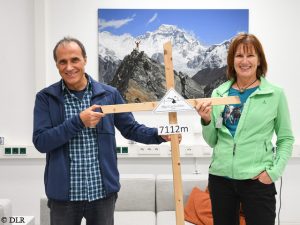

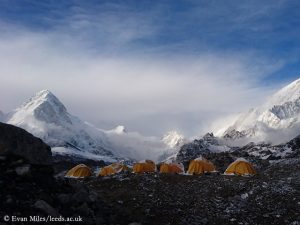
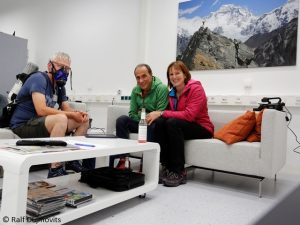
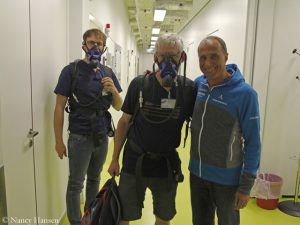
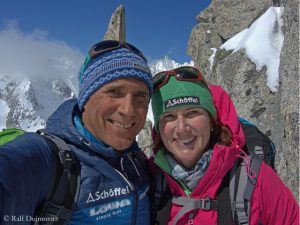

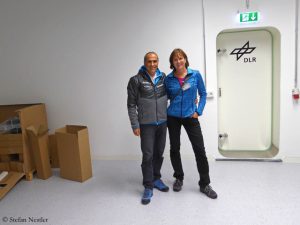
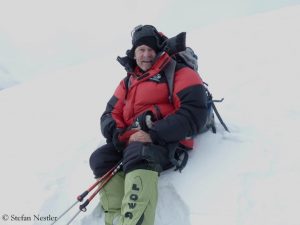
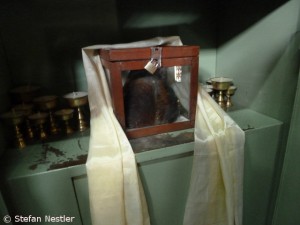
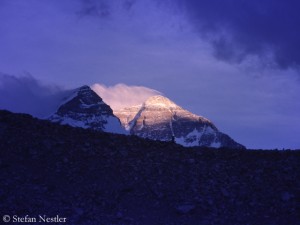

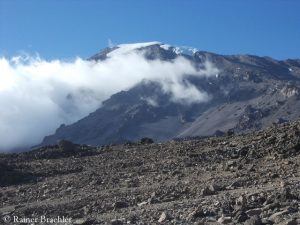
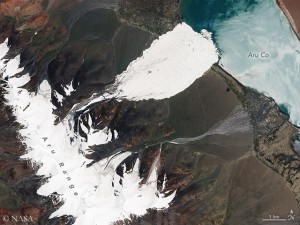
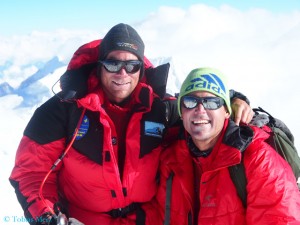
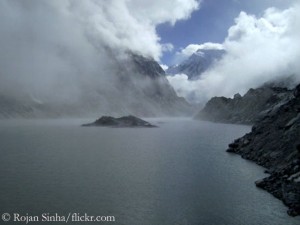
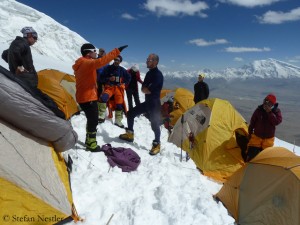





Feedback